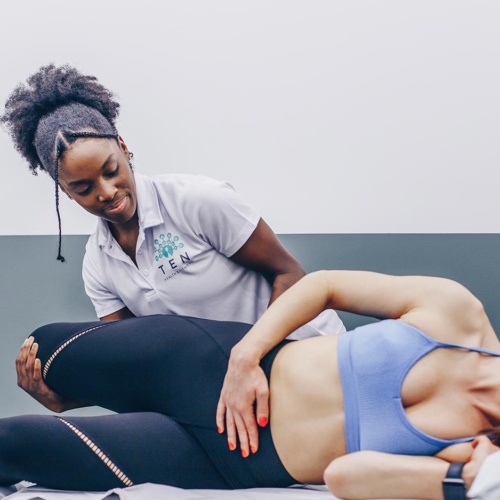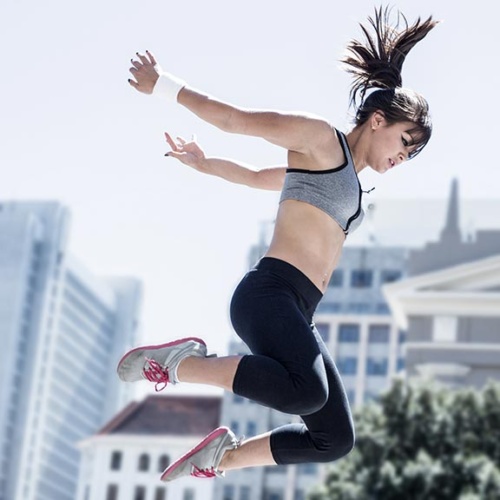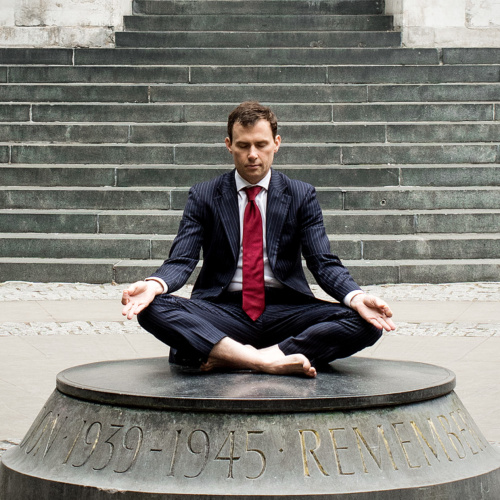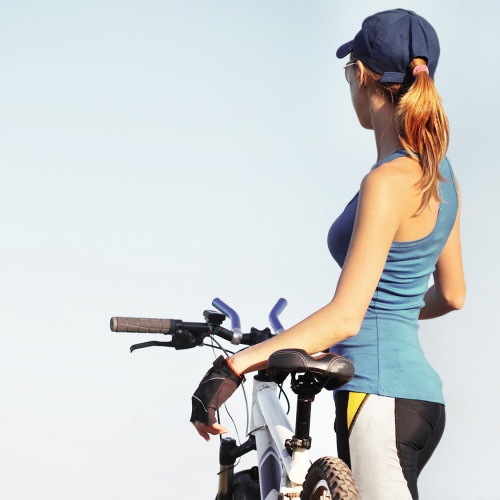Have you got pain in the front of your knee without having done anything to cause it?
If you’re experiencing pain in the front of the knee that you can’t relate to a specific injury or impact, chances are you have Patella tracking problems.
What is patella tracking?
Patella tracking problems occur when the patella (kneecap) moves incorrectly as the knee bends and straightens. This can result in abnormal wear and tear of the layer of cartilage lining the surfaces, exposing underlying bone and causing pain.
What causes poor tracking?
It’s often the ITB (Ilio-tibial band) This relatively under-appreciated (until recently at least) band of connective tissue runs from the side of the pelvis to the knee, with attachments to the outside of the patella. In most people with tracking issues this band is too tight and shifts the patella towards the outside of the trochlear groove (dip on the front of femur/ thighbone) causing repetitive friction and pain.
A tight ITB combined with a number of non-traumatic issues can often cause a misaligned Patella – amongst them a shallow trochlear groove, oddly shaped patella, knock knees, over-pronation of the foot, or even overly tight or loose ligaments or muscles around the knee, hip, ankle or foot.
How do you know you have it?
There are several symptoms that can indicate poor tracking, including pain behind the patella when squatting, crouching, walking downstairs, prolonged sitting and standing from sitting.
This type of discomfort is called patella-femoral pain (between the knee cap and front of thighbone)
You may also experience catching, clicking, popping or grinding in the same place when bending and straightening the leg.
What do I do?
A trip to the physiotherapist to diagnose exactly what the problem is should be the first step, coupled with directed sports massage to re-balance the length of the soft tissues involved.
Pilates and Physiotherapy Exercise crossover
There are a number of exercises that will strengthen and stabilise the surrounding joints, and help correct the kneecap’s range of motion.
Some are based on classic Pilates moves (unsurprisingly, as Physiotherapy and Pilates share a common root). Incorporating the Pilates element improves the specificity of the exercises to achieve quicker and more functional results.
And by following some of the fundamental Pilates techniques – focussing on spinal alignment (holding your posture), core contraction (gentle bracing of the deep, lower abdominals), breathing and slow controlled smooth movements – there’s a double-whammy to the exercises. Not only are you helping fix your knee problem, but you’re also doing an effective workout for the whole body.
Even if you don’t (yet) have any patella issues, they’re also a great prehabilitative exercises that will increase lower limb stability helping prevent injury and to strengthen your legs and core.
The exercises
Foam Roller plank / ITB – 2 MINUTES EACH SIDE

- Place elbow on the mat and the roller under the side of your hip.
- Stretch out both legs leg (you can place the top leg bent on the floor in front if you need support with your balance).
- Gently brace the deep lower abdominals, lift the waist, lengthen your neck and squeeze your shoulder blades back.
- Slowly roll up and down the ITB and the glutes/hip area, creating a long movement.
- Create the movement using the abdominals by creating a sequence of lifting, curling and lengthening the spine (like a side crunch).
- To progress, ‘thread the needle’ – reach the top arm under the body to make the lower side of your waist work harder.
100 – HOLD FOR 100 SECONDS

- Lay on your back. Flatten your ribs by engaging your stomach muscles and hold your lower back in neutral spine (not flat but not hollowed away from the floor – a mid-point of your natural range of movement.)
- Lift both legs to ‘table top’ (90 degrees at hips and shins parallel with the ceiling) and place the pillow between your knees.
- Squeeze the pillow hard, feeling your inner thighs tightening.
- Place your hands like a hammock behind your head: keep your chin up and lift into a curl up.
Double Leg stretch – and with ball twists – 30 REPETITIONS

- Follow steps for the ‘100’ above.
- Straighten your legs as you curl your body up, squeezing hard on the pillow.
- If you have a Pilates Ball, try using it instead of the pillow between the ankles for more of a challenge and twist it between your legs. (Great for the side abdominal muscles.)
VMO Scissors – 30 REPETITIONS

- Follow steps for the ‘100’ above.
- Straighten your legs and turn your toes apart into a frog position so that the inside sole of foot points toward the ceiling.
- Lift and lower 1 leg at a time.
Bridge –30 BUM LIFTS

- Lie on your back and place the pillow between your knees.
- Engage your tummy and hold neutral spine, squeeze the buttocks and lift your bum you have a straight line from knees to head.
- Keep your bum squeezed, lift and lower.
- For an added challenge, try 1 legged Bridge Bum Lifts – 20 each leg.
Glutes sequence – 1 MINUTE ON EACH EXERCISE

Clam with feet on floor:
• Lay on side – engage core, neutral spine and squeeze bum.
• Keep your heels touching as you lift and lower your top leg.
Clam with feet off floor• As above, but with the feet hovering above the floor.
Side Kick up and down:
• From clam position straighten out your top leg in line with your body.
• Lift and lower the leg.
Side Kick forwards and back• As above, but move the leg forwards and backwards.
• (Ensure you are still in neutral – it’s tricky).
Side Kick J slide
• As above, but draw your straight leg backwards and to the ceiling to create a J shape behind you.
• NB This is a very small but precise movement.
Figure of 4• Bend the hip and knee to 90 degrees in front of you.
• Lift and lower the leg maintaining the angle.
Superman squat – 2 MINUTES EACH LEG

- In standing: engage core, neutral spine and squeeze bum.
- Reach/hover 1 leg back and your arms in front of you.
- Bow your chest forwards as you raise your leg (like a nodding dog action).
- Hold and bend/dip/squat and finish by fully straightening and stretching your standing leg.
Plié lunge – 2 MINUTES EACH LEG

- As above, but as you dip reach your hovering back leg across you body then as before stand upright, making sure you fully straighten and stretch your standing leg.
Squat – 2 MINUTES

- In standing: engage core, neutral spine and squeeze bum.
- Place a ball/pillow between your knees.
- Squat down and push your bum backwards (as if you are sitting down on a chair) then return to standing.
- Progress to a single-leg squat with the ball/pillow between the knees. Ensure you keep your hips level by squeezing your bum.
Plank squat – 2 MINUTES

- In an all fours position with the pillow between your knees.
- Engage core, neutral spine and squeeze bum.
- Curl your toes under and straighten legs into a plank.
- Keep your back in Neutral and sit your bum backwards towards your heels and return to plank.





